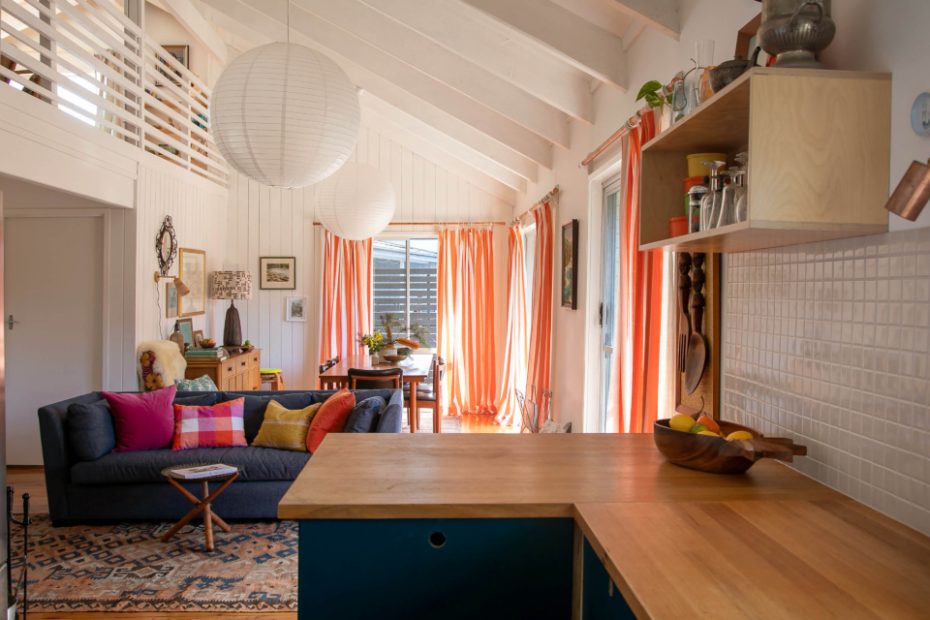Stay + Unwind At This 1970s Beach House On The NSW South Coast
Travel
The open kitchen, living and dining areas are perfect for communal living.
Full of life and colour!
The home gets plenty of natural sunshine.
There are plenty of spaces for both gathering together as a group, or withdrawing in solitude.
Sunny Buoy is surrounded by the Murramarang National Park.
So cosy!
Owner Clodagh Crowe says she wanted the place to feel ‘familiar but with a distinct character of its own’.
One of many cosy nooks to retreat to.
Extra bedding is found in the upstairs loft area.
One of two queen bedrooms.
The garage was converted into a games room, complete with table tennis table.
Sunny Buoy was originally built in the 1970s, but was updated by Clodagh and her husband Nick.
After coming across the listing for a quaint 1970s beach shack six years ago, Clodagh Crowe and her husband Nick fell in love with its vaulted ceilings, hefty timber beams and abundance of natural light.
On their way to the auction, Clodagh suggested ‘Sunny Buoy’ as a potential name for the house — nervous of jinxing their chances of winning, of course. But the couple played their cards right, and Sunny Buoy was soon a place to call their own.
‘I’ll admit I am shamelessly nostalgic for certain things from my 1970s childhood,’ Clodagh says. ‘I so clearly remember those pyramid-shaped ice blocks, “Sunnyboys”. They were the perfect refreshing fix for a baking hot day. They seemed like they would last forever — until they didn’t … I feel like that was the inspiration for Sunny Buoy.’
Although she’s a fan of authentic ‘70s design elements, Clodagh says that the house had a ‘great deal of Mission Brown going on from the waist down.’
So, they set about reviving the property to create a cosy, habitable getaway just moments from the beach in South Durras — a small village nestled in the heart of the Murramarang National Park on the southern NSW coastline.
Features that were a bit worse for wear — namely the kitchen and fibreglass roof cladding — were replaced, while other functional elements reminiscent of the ‘70s era were restored back to their former glory, such as the mustard yellow tiles and timber slatted cabinet in the main bathroom.
‘We wanted to create a sanctuary that would feel somehow familiar but with a distinct character of its own,’ explains Clodagh.
Now mostly complete (bar the garden, the couple’s next project), the house has become an idyllic, playful retreat filled with colour and sunshine. Plus, it can sleep up to six people — there’s two queen rooms, a bunk room, and an open-style loft with a double bed.
Being in the heart of a national park, quietude is a given. The surrounding landscape is just as Clodagh remembers from visits in her childhood — ‘laid back, unpretentious, bushy and wild’.
Kangaroos roam the streets, wallabies snack on the grass, and beaches are abundant (but are only accessible via off-beaten tracks and bushwalks). The closest beach is just a breezy five-minute walk from the house!
‘We love what we call a ‘star walk’ on a clear night on the beach,’ says Clodagh. ‘There is so little light pollution in the vicinity — staring up at the star-filled sky and seeing the Milky Way stretch across never fails to impress.’
Book your stay at Sunny Buoy here!
